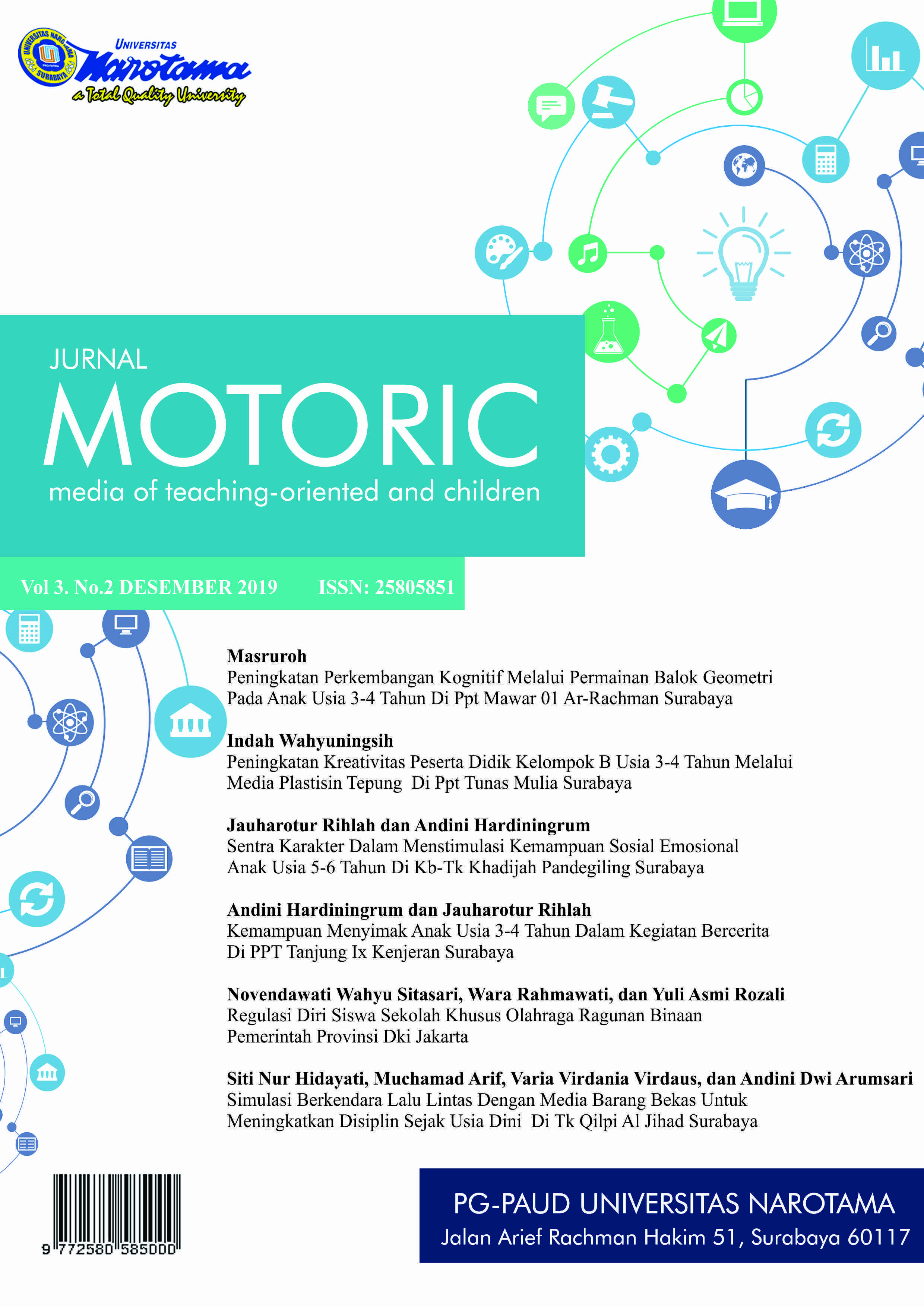KEMAMPUAN MENYIMAK ANAK USIA 3-4 TAHUN DALAM KEGIATAN BERCERITA DI PPT TANJUNG IX KENJERAN SURABAYA
Abstract
Language skills affect each other. Before the child is able to speak, read, and write the child first listens. Listening is the earliest ability a child learns among the three other abilities. This is explained also by Tarigan (2008: 2) "in childhood we learn to listen to language then speak, after that we read and write". PPT activities that are able to develop the ability to listen to children through storytelling activities. By telling a child's hearing can be functioned well to help the ability to speak, by increasing vocabulary vocabulary, the ability to say words, train stringing sentences in accordance with the stage of development. The research design used is qualitative descriptive research. The subjects of this study were children aged 3-4 years in PPT Tanjung IX Kenjeran Surabaya. From the results of research the ability to listen is the ability that can be possessed by children through guidance, in group A PPT Tanjung IX Kenjeran Surabaya children the ability to listen to children based on research results is still in the developing stages. To reach the stage it has developed and is developing very well the teacher must guide and train the child. The data analysis technique of the Miles and Huberman model consists of 3 steps namely, data reduction, data display, and conclusion drawing / verification. The conclusion of this study is that the child is in the stage of developing according to the expected indicators. Situation factors are the factors that most influence the ability to listen to children in storytelling activities. The method used by teachers in PPT Tanjung IX Kenjeran Surabaya is the method of recounting, working on it, answering questions and paraphrase
Downloads

Copyright (c) 2019 MOTORIC

This work is licensed under a Creative Commons Attribution 4.0 International License.
The author submitting a manuscript do so on the understanding that if accepted for publication, copyright of the article shall be assigned to journal MOTORIC, Faculty of Science and Education, Universitas Narotama as publisher of the journal.
Copyright encompasses exclusive rights to reproduce and deliver the article in all form and media, including reprints, photographs, microfilms and any other similar reproductions, as well as translations. The reproduction of any part of this journal, its storage in databases and its transmission by any form or media, such as electronic and mechanical copies, photocopies, recordings, magnetic media, etc will be assigned to journal MOTORIC, Faculty of Science and Education, Universitas Narotama as publisher of the journal.










